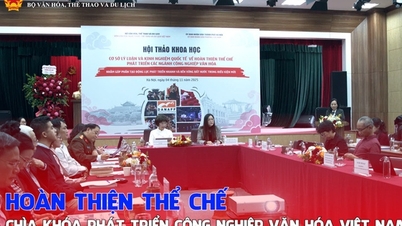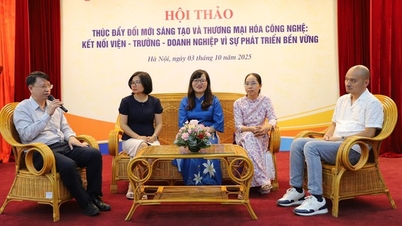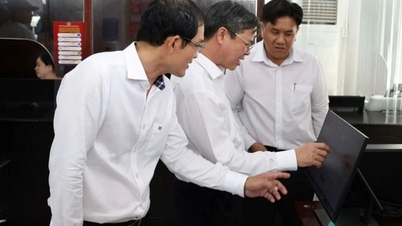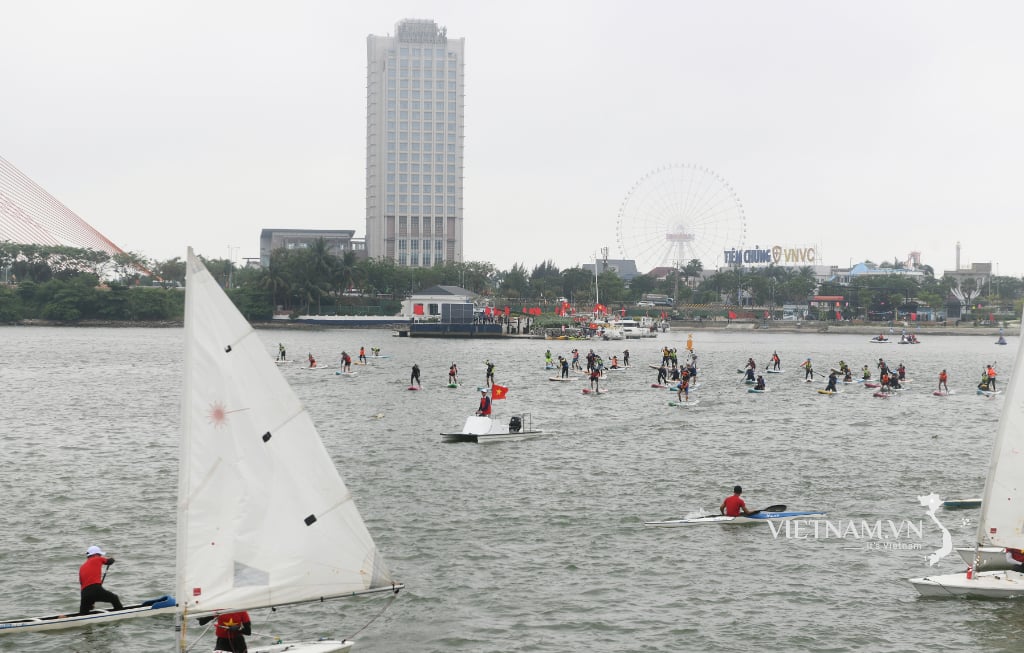Draft Circular on Science and Technology Statistics replaces Circulars No. 03/2018/TT-BKHCN, 04/2018/TT-BKHCN and 15/2018/TT-BKHCN.
Accordingly, the Draft consists of 3 Chapters, 11 Articles and 3 appendices, detailing the statistical indicator system, reporting regime, statistical investigation activities and responsibilities for implementation.
The system of statistical indicators specified in Appendix 1 of the draft includes 133 indicators, divided into 9 main groups of fields: Post and telecommunications; digital transformation; digital technology industry; scientific research and technology development; technology application, innovation, startups and enterprises; intellectual property; standards, measurement, quality; atomic energy, radiation and nuclear safety; finance, human resources and international cooperation in science, technology and innovation.
Applying digital technology and artificial intelligence to improve statistical efficiency
The draft Circular clearly states that statistical activities in the science and technology sector are carried out in accordance with the provisions of the Law on Statistics, the Law on Science, Technology and Innovation (S&I) and relevant legal documents. The implementation must ensure honesty, objectivity, accuracy, completeness and timeliness, accurately reflecting the practical activities of science, technology and innovation in the country.
The statistical system is designed with unified indicators, categories, classifications, forms, methods, processes and technical standards according to regulations of competent authorities; at the same time, it references international statistical standards and methods to ensure comparability, integration and connection with the national statistical system.
Statistical activities must be consistent with the requirements of management, direction, operation and orientation of science, technology and innovation development in each period; meet the needs of monitoring, evaluating, forecasting the situation, building strategies, policies and development plans of the industry and the country.

Statistical activities must be conducted to ensure objectivity and transparency. Illustrative photo.
The draft also clearly stipulates the assurance of information security and confidentiality of statistical data. Information collected, processed and used must be for the right purpose, within the right authority, serving the legitimate needs of agencies, organizations and individuals according to regulations; the data provider is responsible before the law for the accuracy and completeness of the reported information.
Notably, the draft emphasizes the need to promote the application of digital technology, artificial intelligence and Big Data in the stages of collecting, processing, analyzing, storing, publishing and sharing statistical information. The application of these advanced technologies aims to improve efficiency, save costs, increase data processing speed, limit information duplication, and effectively exploit the electronic reporting system, national databases and available administrative data.
Statistical activities must be conducted to ensure objectivity and transparency, without hindering the activities of information providers or investigation subjects, and must comply with approved investigation plans, legal regulations and statistical procedures.
System of statistical indicators of science and technology sector
According to the draft, the system of statistical indicators for the science and technology sector is a set of indicators that comprehensively reflect the situation, resources, results and effectiveness of science, technology and innovation activities. This system is issued to unify the collection, synthesis and publication of statistical data within the entire sector.
The statistical indicators are built on the basis of ensuring consistency with the National Statistical Indicator System, reflecting the main areas including: Information and communication, digital transformation, digital technology industry, scientific research and technology development, technology application and innovation, intellectual property, quality measurement standards, atomic energy and nuclear radiation safety, along with finance, human resources and international cooperation in science and technology.
Appendix 1 issued with the draft Circular specifically stipulates the list of statistical indicators for the science and technology sector, content, calculation method, units, data sources and explanations of statistical indicators.
This system of indicators will be reviewed, updated and adjusted periodically at least every 5 years or when there are changes in management requirements, industry development practices or international statistical standards, to ensure compliance with the National Statistical Indicator System and relevant legal regulations.
Appendix 3 of the draft Circular stipulates statistical reporting forms, divided by specialized fields. Agencies, organizations and units under the scope of the Circular shall make online reports via the National Information System on Science, Technology and Innovation, ensuring time and cost savings, increasing accuracy, transparency and convenience for data synthesis, comparison and processing.
The Ministry of Science and Technology is the focal point responsible for organizing and implementing statistical activities in the science and technology sector nationwide. Ministries, sectors, localities and relevant organizations are responsible for coordinating and providing truthful, complete and timely information and data to serve the Ministry's statistical synthesis, analysis and publication requirements.
The draft also specifically regulates the work of inspection, supervision and handling of violations in statistical activities, ensuring strictness, transparency and compliance with legal regulations.
The issuance of the Circular on Science and Technology Statistics not only inherits and completes current regulations, but also aims at standardization, digitalization and international integration in statistical activities, in line with the orientation of digital government, digital economy and digital society. Honest, objective, accurate, complete and timely science, technology and innovation statistical data is an important foundation for assessing national innovation capacity, serving development policy planning and effective state management in the digital transformation period.
Currently, the draft Circular is being publicly posted on the Electronic Information Portal of the Ministry of Science and Technology.
Source: https://mst.gov.vn/dam-bao-thong-nhat-va-hien-dai-hoa-hoat-dong-thong-ke-nganh-khoa-hoc-va-cong-nghe-197251103002805656.htm


![[Photo] Ho Chi Minh City Youth Take Action for a Cleaner Environment](https://vphoto.vietnam.vn/thumb/1200x675/vietnam/resource/IMAGE/2025/11/04/1762233574890_550816358-1108586934787014-6430522970717297480-n-1-jpg.webp)
![[Photo] The road connecting Dong Nai with Ho Chi Minh City is still unfinished after 5 years of construction.](https://vphoto.vietnam.vn/thumb/1200x675/vietnam/resource/IMAGE/2025/11/04/1762241675985_ndo_br_dji-20251104104418-0635-d-resize-1295-jpg.webp)

![[Photo] Panorama of the Patriotic Emulation Congress of Nhan Dan Newspaper for the period 2025-2030](https://vphoto.vietnam.vn/thumb/1200x675/vietnam/resource/IMAGE/2025/11/04/1762252775462_ndo_br_dhthiduayeuncbaond-6125-jpg.webp)

![[Photo] Ca Mau "struggling" to cope with the highest tide of the year, forecast to exceed alert level 3](https://vphoto.vietnam.vn/thumb/1200x675/vietnam/resource/IMAGE/2025/11/04/1762235371445_ndo_br_trieu-cuong-2-6486-jpg.webp)

























































































Comment (0)